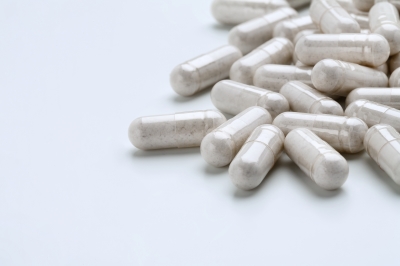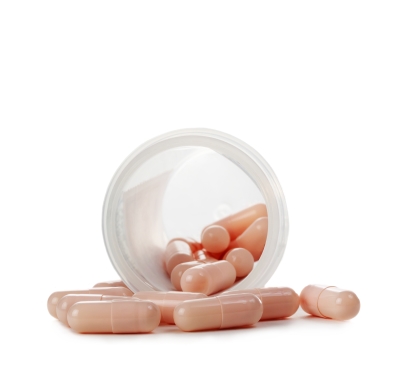It is a serotonin-norepinephrine reuptake inhibitor (SNRI). It is used to treat major depressive disorder and anxiety disorders, particularly generalized anxiety disorder (GAD), social anxiety disorder, and panic disorder.
This article will look at the risks and uses associated with venlafaxine.

How Effexor Works
Venlafaxine is an SNRI. This drug works by enhancing and regulating the levels of two different neurotransmitters in the brain, norepinephrine, also called noradrenaline as well as serotonin.
At low doses, venlafaxine hinders serotonin reuptake. This implies that it leaves more serotonin in the body. At higher doses, it inhibits the reuptake of both serotonin and noradrenaline.
What are Norepinephrine and Serotonin?
Norepinephrine is a stress hormone that affects parts of the brain that relate to attention and response, and it bears the fight-or-flight response, along with epinephrine.
It also:
- Raises the heart rate
- triggers the discharge of glucose from energy stores
- promotes blood flow to the skeletal muscles
Serotonin helps control several processes within the brain. These include anxiety and aggression, mood and emotions, sleep, perceptions, memory, and appetite.
Serotonin and norepinephrine are believed to play an essential role in controlling people’s sense of well-being.
Adverse Effects
Several studies have shown the drug to be effective and safe in its prescription usage.

One review implies that it is comparable to other major antidepressants in treating obsessive-compulsive disorder (OCD), post-traumatic stress disorder (PTSD), panic disorder, social anxiety disorder, and generalized anxiety disorder (GAD).
It is more likely to cause nausea and vomiting than do the SSRIs.
Before taking venlafaxine, individuals should discuss their medical history with their doctor to ascertain whether the drug is appropriate.
Worsening Symptoms of Depression
Patients with major depressive disorder may experience agitation, a worsening of depression, and other symptoms, such as thoughts of suicide, especially at the beginning of the treatment.
People caring for these patients are encouraged to monitor these signs carefully and contact a physician immediately if they happen.
Other Common Adverse Effects
Patients may perceive these common side effects:
- drowsiness
- headache
- blurred vision
- trouble sleeping
- loss of appetite
- dry mouth
- numbness
- irregular bowel movements
- excessive sweating
Rare side effects include:
- serotonin syndrome
- high cholesterol
- high blood pressure
- thoughts of suicide
- mania
- mental impairment
- lockjaw
Sometimes, a major depressive episode can be the first manifestation of bipolar disorder, so patients should be screened for bipolar disorder before being prescribed venlafaxine.
Missing a Dose or Taking Too Much
Missing a single dose may trigger dysphoria. This is a state of anxiety, unease, or depression.
A missed dose should be taken immediately after the patient remembers to take it, but if it is almost time for the next dose, they should skip the missed dose entirely.

No more than one extended-release capsule should be taken in one day.
Taking too much can lead to the following symptoms:
- dizziness, nausea, and vomiting
- dilated pupils
- muscle pain
- feeling hot and cold
- drowsiness
- changes in heartbeat
- seizures
- coma
Other effects include tremor, vertigo, headache, hallucinations, impaired concentration, fatigue, and paresthesia, which is a sensation of pricking, tingling, or creeping on the skin.
Venlafaxine Withdrawal
Venlafaxine withdrawal can occur if the medication is stopped abruptly or if the dose is significantly reduced quickly. It’s a result of the body getting used to the presence of the drug and then experiencing a sudden absence of it. Venlafaxine, particularly because of its short half-life, is known for potentially causing significant withdrawal symptoms compared to some other antidepressants. These symptoms can vary in intensity and duration depending on several factors, including the length of time the medication was used, the dosage, and the individual’s physiology.
Common symptoms of venlafaxine withdrawal include:
- Dizziness and Balance Issues: Many people report feeling dizzy, lightheaded, or having trouble walking.
- Brain Zaps or Electric Shock Sensations: A distinctive and often described sensation that can be uncomfortable and disorienting.
- Mood Changes: Including irritability, anxiety, depression, and mood swings.
- Sleep Disturbances: Insomnia, vivid dreams, or nightmares.
- Flu-like Symptoms: Such as fatigue, muscle pain, headaches, and sweating.
- Gastrointestinal Issues: Nausea, vomiting, diarrhea, or abdominal cramps.
To minimize withdrawal symptoms, healthcare providers typically recommend tapering off venlafaxine gradually rather than stopping it suddenly. Tapering schedules can vary significantly from one person to another, based on the dose being taken and the individual’s response to dosage reductions. It’s crucial to follow a healthcare provider’s guidance when discontinuing venlafaxine or making any changes to the dosage.
If withdrawal symptoms are severe or persist, it’s important to seek medical advice. In some cases, a healthcare provider might adjust the tapering schedule, suggest symptom management strategies, or recommend alternative treatments.
At the United Recovery Project, a comprehensive approach is taken towards treating addiction related to Venlafaxine, recognizing the complexity of antidepressant dependency and withdrawal. Our facility emphasizes personalized care, combining medical detoxification with psychological support and holistic therapies to address both the physical and emotional challenges of Venlafaxine addiction. By focusing on the underlying causes of dependency and equipping individuals with coping strategies for sustainable recovery, the United Recovery Project provides a nurturing environment for healing. Their multifaceted treatment approach underscores the importance of a supportive, therapeutic community in overcoming the hurdles of Venlafaxine addiction, highlighting a path towards lasting recovery and well-being.


